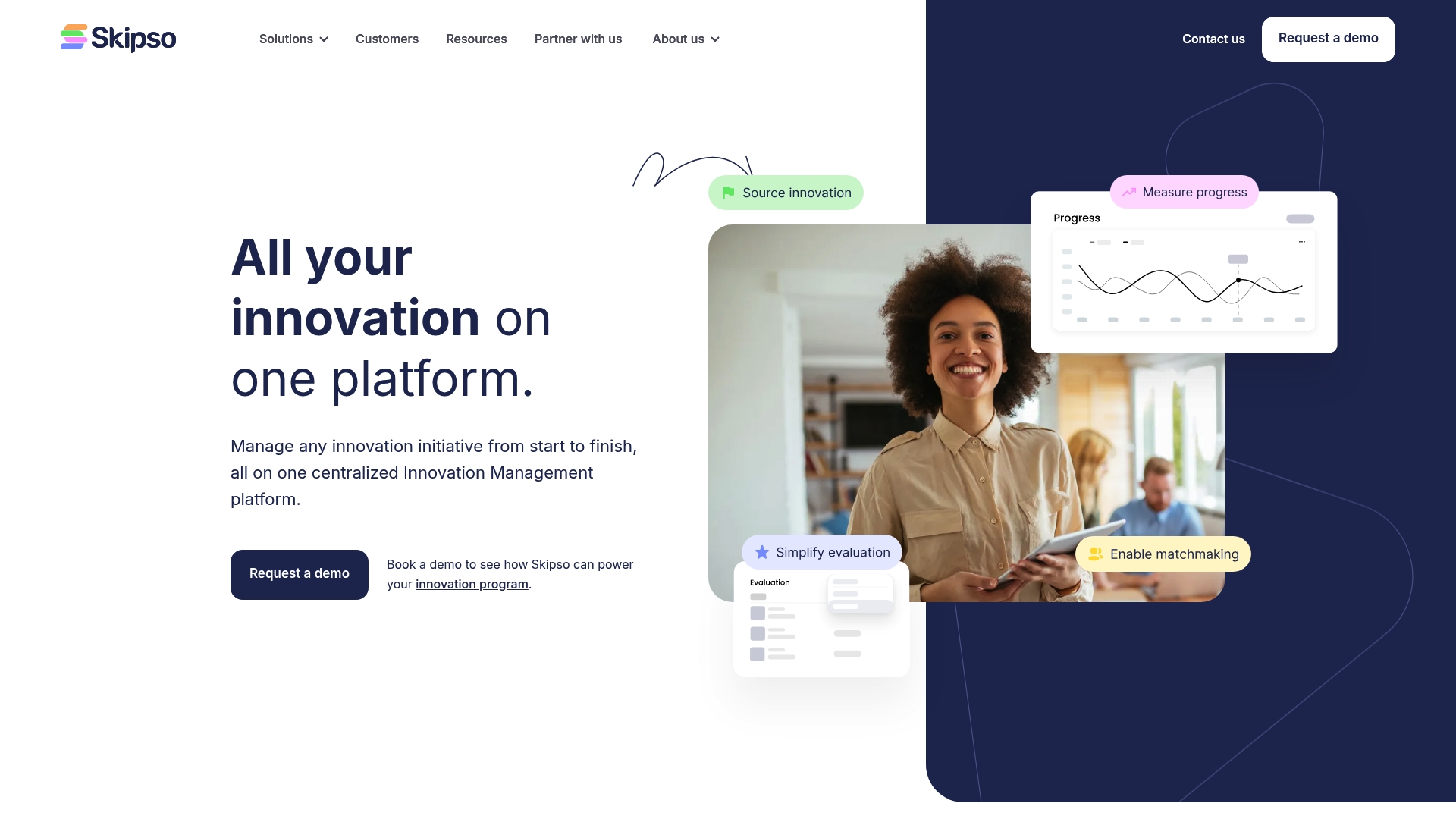


What is the Ideation Phase? Understanding the Concept
Every bold innovation starts with a single idea, but few realize how crucial the earliest steps really are. McKinsey found that organizations with disciplined ideation strategies outperform their peers by nearly double in market value growth. Plenty of teams believe brainstorming is enough. What actually drives breakthrough solutions is not just gathering ideas, but the way that process is structured from the start.
Table of Contents
- Defining The Ideation Phase And Its Elements
- The Importance Of The Ideation Phase In Innovation
- How The Ideation Phase Fuels Creative Problem Solving
- Key Techniques And Tools Used In The Ideation Phase
- Real-World Applications Of The Ideation Phase In Business
Quick Summary
| Takeaway | Explanation |
|---|---|
| Prioritize structured ideation processes | A systematic approach to idea generation enhances creativity and innovation outcomes significantly. |
| Foster a culture of psychological safety | Team members must feel safe and supported to share unconventional ideas without fear of criticism. |
| Utilize diverse cognitive techniques | Employ methods like brainstorming and mind mapping to promote innovative thinking and explore solutions. |
| Integrate ideation across departments | Collaborating cross-functionally ensures broader perspectives and more holistic solutions to challenges. |
| Document and evaluate potential ideas | Capture all ideas and assess them to refine and implement the best solutions effectively. |
Defining the Ideation Phase and Its Elements
The ideation phase represents a critical starting point in the innovation process where organizations systematically generate, develop, and refine potential solutions to identified challenges. Understanding the concept of ideation involves recognizing it as more than just brainstorming, but a structured approach to creative problem solving.
The Conceptual Framework of Ideation
Ideation is fundamentally about expanding the realm of possibilities before narrowing down to the most promising solutions. At its core, this phase involves multiple cognitive strategies designed to unlock creative potential and challenge existing assumptions. Organizations approach ideation through several key mechanisms:
- Divergent Thinking: Generating multiple potential solutions without immediate judgment
- Collaborative Exploration: Engaging diverse perspectives to uncover innovative approaches
- Systemic Problem Framing: Understanding challenges from multiple interconnected viewpoints
Key Elements of the Ideation Process
Successful ideation relies on creating an environment that encourages open communication and creative thinking. This involves establishing psychological safety where team members feel comfortable sharing unconventional ideas without fear of criticism. Read more about how to evaluate ideas after the initial generation phase to understand the subsequent steps in innovation management.
The ideation phase typically encompasses several interconnected stages:
- Identifying the core problem or opportunity
- Generating a wide range of potential solutions
- Encouraging wild and speculative thinking
- Capturing and documenting all potential concepts
- Creating initial frameworks for potential implementation
Professional innovation teams recognize that effective ideation is not about quantity, but about creating an ecosystem that supports creative exploration and meaningful solution development. By establishing clear processes, providing necessary resources, and fostering a culture of curiosity, organizations can transform the ideation phase from a sporadic activity into a systematic approach to breakthrough innovation.

The Importance of the Ideation Phase in Innovation
The ideation phase represents a strategic cornerstone in transforming organizational potential into tangible innovation. According to McKinsey research, successful innovation is not merely about generating ideas, but creating a systematic approach that consistently produces breakthrough solutions.

Strategic Significance of Ideation
Innovation begins with understanding why the ideation phase is critical. Unlike random brainstorming, this phase provides a structured methodology for exploring potential solutions. Organizations that master the ideation phase can:
- Identify unexplored market opportunities
- Challenge existing operational paradigms
- Develop competitive advantages through novel thinking
- Mitigate risks associated with traditional problem solving
Driving Organizational Transformation
The ideation phase serves as a catalyst for broader organizational transformation. By encouraging cross-functional collaboration and creating safe spaces for unconventional thinking, companies can unlock creative potential that extends beyond individual departments. Learn more about understanding the difference between idea and innovation to appreciate the nuanced journey from concept to implementation.
Effective ideation requires more than creative thinking. It demands a strategic framework that systematically captures, evaluates, and refines potential solutions. Successful organizations recognize that the true value of the ideation phase lies not in the quantity of ideas generated, but in the quality of thinking that emerges from structured, intentional exploration.
How the Ideation Phase Fuels Creative Problem Solving
Creative problem solving represents a sophisticated cognitive process that goes beyond traditional linear thinking. According to research in cognitive psychology, the ideation phase acts as a critical catalyst for transforming complex challenges into innovative solutions by encouraging divergent thinking and cognitive flexibility.
Cognitive Mechanisms of Problem Solving
The ideation phase engages multiple cognitive strategies that enable breakthrough thinking. Key mental mechanisms include:
- Breaking conventional mental models
- Connecting seemingly unrelated concepts
- Challenging underlying assumptions
- Reframing problems from multiple perspectives
Psychological Safety and Creativity
Successful creative problem solving depends on creating an environment of psychological safety where team members feel empowered to explore unconventional ideas. Learn how to set the tone for high value idea generation to understand how organizational culture directly impacts innovation potential.
Professional innovators recognize that problem solving is not about finding the first solution, but exploring a comprehensive range of potential approaches. By suspending immediate judgment and encouraging speculative thinking, organizations can unlock creative potential that transcends traditional problem solving methodologies. The ideation phase provides a structured yet flexible framework for transforming complex challenges into actionable, innovative strategies.
Key Techniques and Tools Used in the Ideation Phase
The ideation phase demands sophisticated techniques and tools that transform abstract thinking into structured innovation strategies. According to design thinking experts, successful ideation requires a comprehensive toolkit that enables teams to explore, challenge, and reimagine potential solutions.
Cognitive Exploration Techniques
Innovative organizations employ multiple techniques to stimulate creative thinking and break through traditional problem solving barriers. Critical cognitive exploration methods include:
- Brainstorming
- Mind mapping
- SCAMPER method
- Reverse thinking
- Analogical reasoning
Visualization and Prototyping Tools
Transforming abstract ideas into tangible concepts requires powerful visualization strategies. Sketching, rapid prototyping, and storyboarding help teams materialize complex thoughts and evaluate potential solutions more effectively. Learn more about managing the internal evaluation of innovation processes to understand how these tools integrate into broader innovation frameworks.
Professional innovators recognize that ideation tools are not one size fits all. Successful implementation depends on selecting appropriate techniques that match the specific challenge, organizational culture, and desired innovation outcomes. By creating a flexible yet structured approach to idea generation, teams can systematically explore breakthrough solutions while maintaining strategic focus.
The following table summarizes key techniques and tools discussed in the ideation phase, highlighting their main purpose and how they contribute to creative problem solving.
| Technique/Tool | Main Purpose | Contribution to Ideation |
|---|---|---|
| Brainstorming | Generate a large volume of ideas | Encourages unrestricted idea generation |
| Mind Mapping | Visualize relationships between ideas | Reveals connections and new perspectives |
| SCAMPER Method | Spark alternative solutions | Encourages modification and transformation of ideas |
| Reverse Thinking | Challenge assumptions through opposites | Helps identify hidden opportunities or drawbacks |
| Analogical Reasoning | Apply concepts from other domains | Promotes novel solutions by bridging unrelated fields |
| Sketching/Storyboarding | Make abstract ideas tangible | Facilitates shared understanding and evaluation |
| Rapid Prototyping | Create quick, low-fidelity representations | Enables testing of concepts early in the process |
Real-World Applications of the Ideation Phase in Business
The ideation phase transcends theoretical concepts, providing tangible strategic value across diverse business environments. According to McKinsey research, organizations that systematically implement ideation strategies consistently outperform competitors by developing innovative solutions to complex challenges.
Industry-Specific Innovation Approaches
Different industries leverage the ideation phase uniquely to address sector-specific challenges. Prominent examples include:
- Technology sector developing disruptive digital products
- Healthcare organizations designing patient-centric solutions
- Manufacturing companies optimizing production processes
- Financial services creating personalized customer experiences
- Sustainability teams designing environmental innovations
Strategic Implementation Frameworks
Successful businesses integrate ideation not as an isolated activity, but as a comprehensive organizational strategy. Explore strategies for high-value idea generation to understand how leading organizations transform creative thinking into competitive advantages.
Professional innovators recognize that effective ideation requires more than creative thinking. It demands a systematic approach that aligns creative exploration with strategic organizational goals, transforms abstract concepts into actionable strategies, and creates a culture of continuous innovation across all business functions.
This table provides a breakdown of how the ideation phase is strategically applied in different industries, clarifying primary goals and typical examples for each sector.
| Industry | Primary Goal | Typical Application Example |
|---|---|---|
| Technology | Develop disruptive digital products | Launching innovative apps and software platforms |
| Healthcare | Design patient-centric solutions | Creating telehealth initiatives |
| Manufacturing | Optimize production processes | Streamlining supply chain through automation |
| Financial Services | Personalize customer experiences | Developing AI-driven financial planning tools |
| Sustainability | Create environmental innovations | Designing eco-friendly packaging |
Transform Ideation Into Action With a Proven Innovation Management Platform
If you feel stuck turning high-potential ideas from your team’s ideation phase into structured innovations, you’re not alone. Many organizations struggle to move from creative brainstorming and divergent thinking to concrete and scalable results. The article showed how critical it is to bridge the gap between open collaboration and actual implementation. Missed opportunities, lack of follow-through, and uncertainty about next steps are common pain points in this journey.

Imagine running your next corporate innovation challenge or accelerator with confidence, knowing every creative idea is captured, evaluated, and advanced using a single platform. With Skipso’s innovation management software, you get the infrastructure to turn your best ideas into real impact. Manage the full innovation lifecycle, create cross-functional programs, and ensure nothing valuable falls through the cracks. Ready to break out of old routines and build a culture of continuous advancement? Visit our website now and discover how you can transform your ideation phase from potential to performance.
Frequently Asked Questions
What is the ideation phase in innovation?
The ideation phase is the initial stage of the innovation process where organizations systematically generate, develop, and refine potential solutions to identified problems or challenges. It involves structured approaches to creative problem-solving rather than random brainstorming.
Why is the ideation phase important for organizations?
The ideation phase is crucial because it helps organizations identify unexplored market opportunities, challenge existing paradigms, develop competitive advantages, and mitigate risks associated with traditional problem-solving methods. It’s a strategic cornerstone that can lead to tangible innovation.
What techniques are commonly used in the ideation phase?
Common techniques in the ideation phase include brainstorming, mind mapping, the SCAMPER method, reverse thinking, and analogical reasoning. These methods help stimulate creative thinking and overcome traditional problem-solving barriers.
How do organizations create an environment conducive to effective ideation?
Organizations can foster effective ideation by establishing psychological safety, encouraging open communication, and promoting cross-functional collaboration. Creating safe spaces for team members to share unconventional ideas is essential for unlocking creative potential.
Recommended













